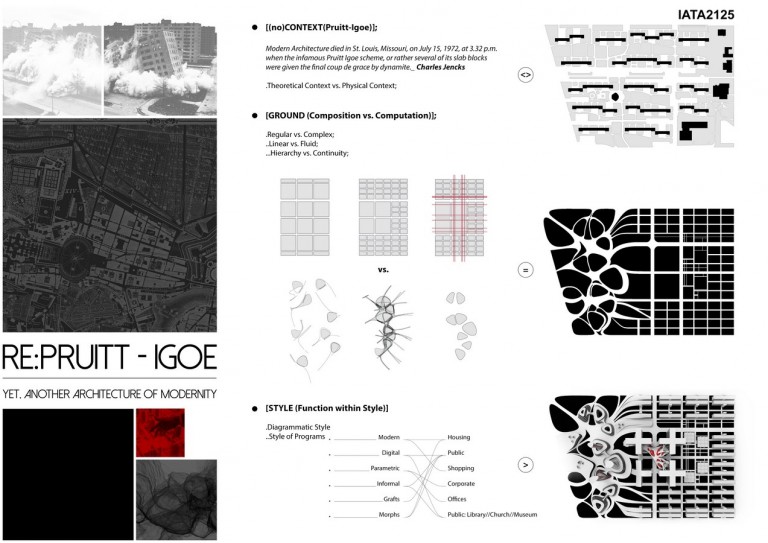This project is a “critical” answer following a theoretical study on a possible conceptual and cultural continuity between modernism and the “digital” contemporary avant-garde. In fact, if we read the definition of modernism given by Clement Greenberg as the conception of each artistic discipline that resides in “the use of characteristic methods of a discipline to criticize the discipline itself, not in order to subvert it but in order to entrench themselves it more firmly in its area of competence”, we discover that digital has many points in common with the avant-garde of the last century.
This is even more evident by studying the four basic categories that Greenberg considers to be the conceptual bases of modernism itself: “Autonomy”, “Medium Specificity”, “Opticality” and “Materiality”.
Participant Name: Giacomo Pala
Country: Italy

Although the shapes are different, digital expressions of architecture are based on these themes, that from an architectural point of view are: autonomy of language (emphasis on geometry and process), the space as a medium of architecture and urban space, aesthetic judgement on architecture that can be concluded only through the experience of space and materiality, i.e. an architecture that uses the most advanced technology as a theoretical legitimization to justify itself.
Pruitt-Igoe: Context The most obvious place to trace a “critical” project on this issue, is undoubtedly Pruitt-Igoe in St. Louis, Missouri. In this place, Charles Jencks proclaimed the death of modernism and, in the same place. my project represents the underlying conceptual continuity between the different avant-garde movements and, at the same time, the clash between different forms that become symbols. The real context of the project is not the physical location of St. Louis, but the theoretical place of Jencks’s statement: a mental place.
isciplinary Considerations: Style/Functions There are several consequences to this project:
- A dystopian project showing the possible negative consequences of an architecture that legitimates itself in creating elegant spaces, built with the latest technology, which forms derive from geometrical input and that does not consider the symbolic aspects of the language.
- At the same time it opens up a space to reflect on the theme of “style” and how each style may have specific characters to accommodate at best different functions. In a sense, then, this project offers an update of typological taxonomies: style within function
This contradiction (Dystopia/Design proposal) is the main feature of the project: a contradiction that reveals multiple meanings of design and reflections on different themes from which depend the development of disciplines and, consequently, urban spaces.